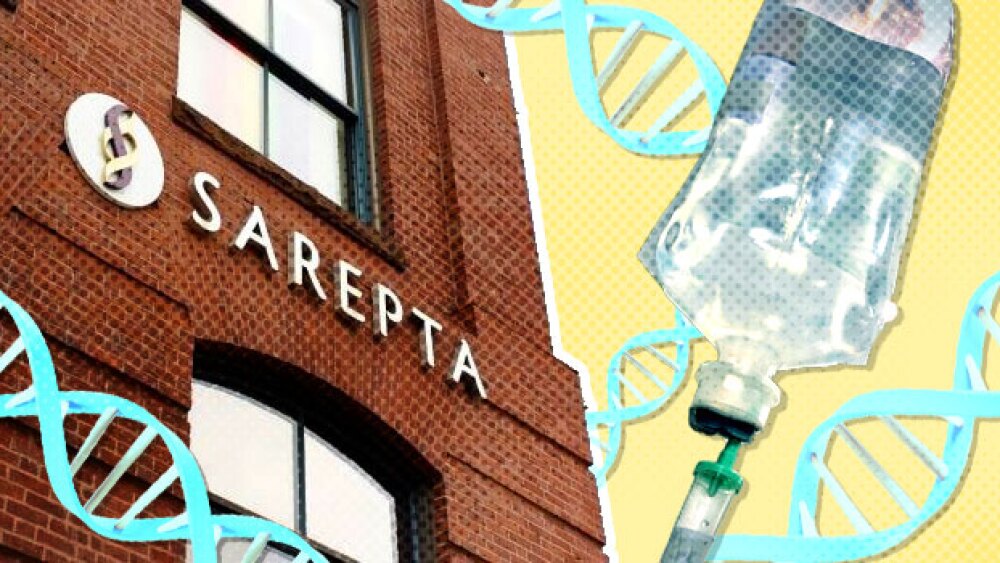NeuroSense Therapeutics Ltd. today announced positive preliminary results from a novel biomarker study conducted to evaluate the potential of NeuroSense’s combination platform therapy for the treatment of Parkinson’s disease (PD), the second most common neurodegenerative disorder.
CAMBRIDGE, Mass., May 2, 2023 /PRNewswire/ -- NeuroSense Therapeutics Ltd. (Nasdaq: NRSN) (“NeuroSense”), a company developing treatments for severe neurodegenerative diseases, today announced positive preliminary results from a novel biomarker study conducted to evaluate the potential of NeuroSense’s combination platform therapy for the treatment of Parkinson’s disease (PD), the second most common neurodegenerative disorder. This study compared blood samples from 30 healthy individuals to 30 people living with PD by utilizing neuronal derived exosomes to identify modulations in PD-associated biomarkers, including AG02.  AGO2 (Argonaute 2), the catalytic subunit of the protein complex responsible for RNA-induced silencing,1 was shown to be critical to the regulation of alpha-synuclein (αSyn) accumulation in dopaminergic neurons of the substantia nigra pars compacta, the region of the brain that is responsible for motor control.2 The dysregulation of αSyn through dysfunction of AGO2 can have detrimental effects in the brain, which can lead to PD. In the PD biomarker study, NeuroSense observed a statistically significant (p= 0.002) decrease in levels of AGO2 in newly diagnosed PD patients (n=15) when compared to the healthy control group. There were no significant changes observed in AGO2 levels of more advanced stage PD patients, indicating this trend could be related to disease onset. In a Phase 2a clinical trial conducted in people living with amyotrophic lateral sclerosis (ALS), NeuroSense’s platform combination therapy was observed to induce a statistically significant (p= 0.039) increase of AGO2 and also showed a trend of increased levels of LC3 (p= 0.054). LC3 is an essential protein involved in autophagy,3 a cellular recycling process utilized to degrade aggregated proteins and damaged organelles, which has been reported to be involved in many neurodegenerative disorders, including PD. In the PD biomarker study NeuroSense observed a change in levels of LC3, which decreased in newly diagnosed PD patients (p= 0.034), suggesting an impairment in cellular recycling processes. Other biomarkers that were measured, including some PD-specific markers, did not reveal trends and may be revisited in future studies. “We believe these results strengthen the scientific rationale to develop NeuroSense’s platform technology for PD, as the mechanism of action may be helpful in targeting disease-specific pathways, specifically AGO2 dysregulation,” stated Dr. Shiran Zimri, NeuroSense’s VP of R&D. “We intend to further evaluate these findings, as well as explore additional biomarkers and their involvement in the progression and pathology of PD in future studies.” Prof. Roy Alcalay M.D., Chief of the Movement Disorders Center at Tel-Aviv Sourasky Medical Center, who participated in conducting the PD biomarker study, commented, “We are excited by this interesting collaboration and look forward to continuing our work together.” “We believe that these data denote the potential of NeuroSense’s platform technology to target early stages of Parkinson’s disease. This is particularly relevant as early detection of PD is becoming more common,” stated NeuroSense’s CEO, Alon Ben-Noon. “Based on these encouraging results, we are now looking to co-develop our PD asset with collaborators that have a core focus on Parkinson’s.” About Parkinson’s Disease Parkinson’s disease (PD) is the second most common neurogenerative condition after Alzheimer’s disease. Nearly 1 million people in the U.S. and an estimated 10 million people worldwide are living with PD. Characterized by uncontrollable movements, difficulty with balance and coordination, as well fatigue, depression, and memory difficulties, these symptoms begin to occur when dopaminergic neurons in the substantia nigra become impaired and die. The global PD treatment market was valued at $5.7 billion in 2021 and is projected to reach $10.4 billion by 2031, growing at a CAGR of 6.2%. About AGO2 AGO2 is a protein-coding gene essential for miRNA function. It is involved in the regulation of alpha-synuclein (αSyn) biogenesis. As obtained in cultures and cell tissues alike, depletion of AGO2 leads to αSyn accumulation. In pre-clinical studies, an increase in αSyn mRNA and protein expression was observed when AGO2 is knocked-out. The dysregulation of αSyn through dysfunction of AGO2 can have detrimental effects in the brain, resulting in PD.2 About LC3 LC3, microtubule-associated protein 1A/1B-light chain 3, is an essential protein involved in autophagosome biogenesis/maturation, as well as an adaptor protein for selective autophagy.3 The most prevalent pathological features of many neurodegenerative diseases are the aggregation of misfolded proteins and the loss of neurons. Autophagy, utilized to degrade aggregated proteins and damaged organelles, has been reported to be involved in the occurrence of pathological changes in many neurodegenerative disorders, including Alzheimer’s disease, Parkinson’s disease, Huntington’s disease and amyotrophic lateral sclerosis (ALS).4Therefore, LC3 has been widely used to monitor the number of autophagosomes as well as autophagic activity.3 About NDEs NeuroSense’s biomarker study utilized neuronal-derived exosomes (NDEs) extracted from plasma. NDEs are small extracellular vesicles (EVs) generated by neurons that encapsulate a variety of molecules such as proteins, nucleic acids, and metabolites. ExoSORT™ by NeuroDex was used to identify NDEs in this biomarker study. Identification of NDEs and their cargo in body fluids can facilitate the discovery of new biomarkers for prognosis and therapy, as these vesicles can pass the blood-brain barrier (BBB) and provide a depiction of the current physiological status of neurons in the brain. About NeuroSense NeuroSense Therapeutics, Ltd. is a clinical-stage biotechnology company focused on discovering and developing treatments for patients suffering from debilitating neurodegenerative diseases. NeuroSense believes that these diseases, which include amyotrophic lateral sclerosis (ALS), Alzheimer’s disease and Parkinson’s disease, among others, represent one of the most significant unmet medical needs of our time, with limited effective therapeutic options available for patients to date. Due to the complexity of neurodegenerative diseases and based on strong scientific research on a large panel of related biomarkers, NeuroSense’s strategy is to develop combined therapies targeting multiple pathways associated with these diseases. For additional information, we invite you to visit our website and follow us on LinkedIn and Twitter. Forward-Looking Statements This press release contains “forward-looking statements” that are subject to substantial risks and uncertainties. All statements, other than statements of historical fact, contained in this press release are forward-looking statements. Forward-looking statements contained in this press release may be identified by the use of words such as “anticipate,” “believe,” “contemplate,” “could,” “estimate,” “expect,” “intend,” “seek,” “may,” “might,” “plan,” “potential,” “predict,” “project,” “target,” “aim,” “should,” “will” “would,” or the negative of these words or other similar expressions, although not all forward-looking statements contain these words. Forward-looking statements are based on NeuroSense Therapeutics’ current expectations and are subject to inherent uncertainties, risks and assumptions that are difficult to predict and include statements regarding the co-development of our PD assets with collaborators with a core focus on Parkinson’s. Further, certain forward-looking statements are based on assumptions as to future events that may not prove to be accurate. Forward-looking statements are subject to a number of risks and uncertainties, including a delay in the reporting of top-line results from our ALS Phase 2b clinical trial, the risk that the final results of Parkinson’s Disease (PD) Biomarker Study will not be consistent with the preliminary results and the risk that we will not be successful in signing co-development agreement or other agreements with collaborators with a core focus on Parkinson’s. The future events and trends may not occur and actual results could differ materially and adversely from those anticipated or implied in the forward looking statements. You should not rely on these statements as representing our views in the future. More information about the risks and uncertainties affecting the Company is contained under the heading “Risk Factors” in the Annual Report on Form 20-F filed with the Securities and Exchange Commission on March 22, 2023. Forward-looking statements contained in this announcement are made as of this date, and NeuroSense Therapeutics Ltd. undertakes no duty to update such information except as required under applicable law. 1 O’Carroll, D. & Schaefer, A. General Principals of miRNA Biogenesis and Regulation in the Brain. Neuropsychopharmacology 38, 39-54, doi:10.1038/npp.2012.87 (2013). 2 Hernandez, S. M. et al. Unexpected Implication of SRP and AGO2 in Parkinson’s Disease: Involvement in Alpha-Synuclein Biogenesis. Cells 10, doi:10.3390/cells10102792 (2021). 3 Lee, Y. K. & Lee, J. A. Role of the mammalian ATG8/LC3 family in autophagy: differential and compensatory roles in the spatiotemporal regulation of autophagy. BMB reports 49, 424-430, doi:10.5483/bmbrep.2016.49.8.081 (2016). 4 Guo, F., Liu, X., Cai, H. & Le, W. Autophagy in neurodegenerative diseases: pathogenesis and therapy. Brain pathology (Zurich, Switzerland) 28, 3-13, doi:10.1111/bpa.12545 (2018).
SOURCE NeuroSense | ||
Company Codes: NASDAQ-NMS:NRSN |




